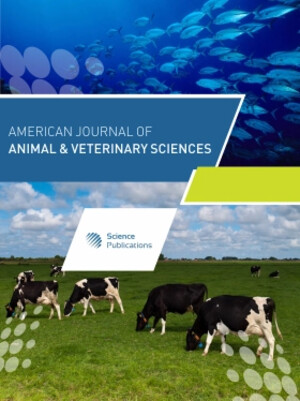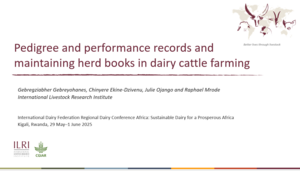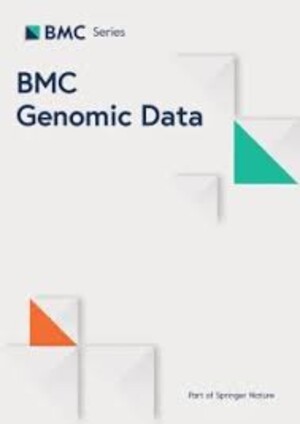
Gonadal and extragonadal sperm reserves and testicular histometric characteristics in Zebu and crossbred bulls: Effect of dry season nutritional supplementation
Abstract
A total of 64 bull calves, composed of 27 Boran and 37 Boran X Friesian, were weaned at 6 months of age and divided into supplement or control groups within breed. All bulls were kept in one paddock and grazed on natural pasture. Supplement groups received 1.5 kg per head day of a diet containing 16 percent crude protein and 8 MJ kg dry matter for two dry seasons until castrated at 21 months of age. Testes weight was heavier in supplemented than in control bulls (285 vs. 242 g) and in Boran X Friesian than in Boran bulls (300 vs. 215 g). Epididymal weight differed between supplemented and control bulls (30.4 vs. 25.1 g) and between Boran and Boran X Friesian (22.1 vs. 31.9 g) bulls. Supplemented bulls had 27 percent greater daily sperm production and 36 percent greater epididymal sperm reserves than control bulls. Sperm reserves in the caput and cauda segments were also greater in supplemented than in control bulls. Boran X Friesian bulls had 32 percent greater daily sperm production than Boran bulls, but epididymal sperm reserves did not differ between the two breeds. Seminiferous tubule diameter was larger by 9 percent in supplemented than in control and by 14 percent in Boran X Friesian than in Boran bulls. Supplementary feeding to young Boran and Boran X Friesian bulls during dry seasons resulted in heavier testes and epididymis weights, larger seminiferous tubule diameter and higher gonadal and extragonadal sperm reserves.
Citation
Animal Reproduction Science;29(1-2):25-33










